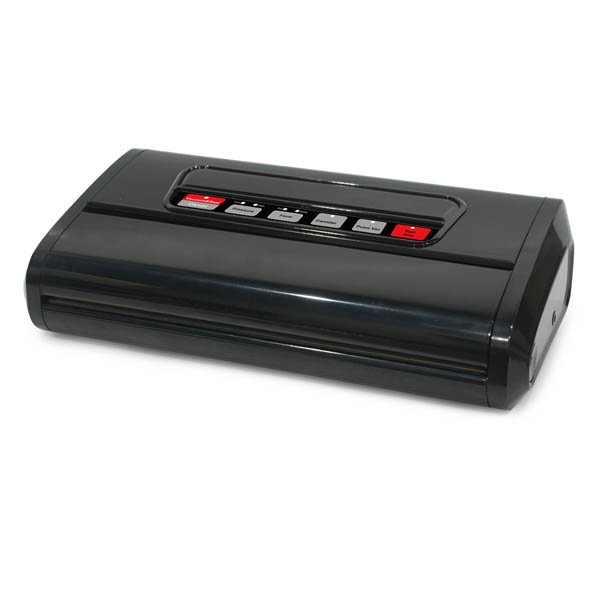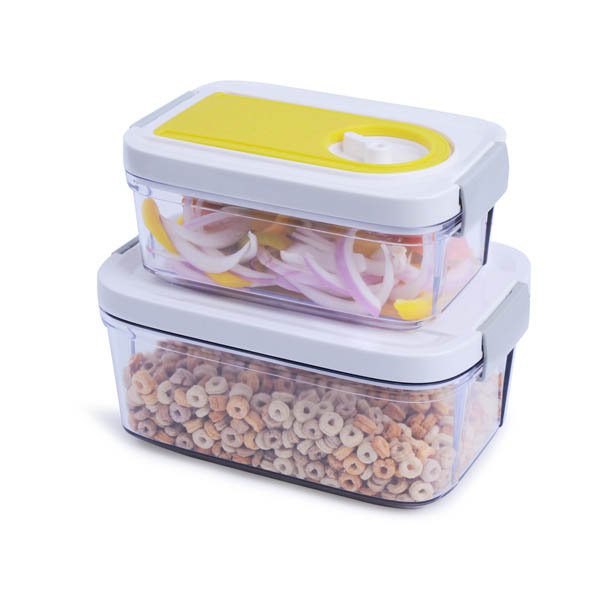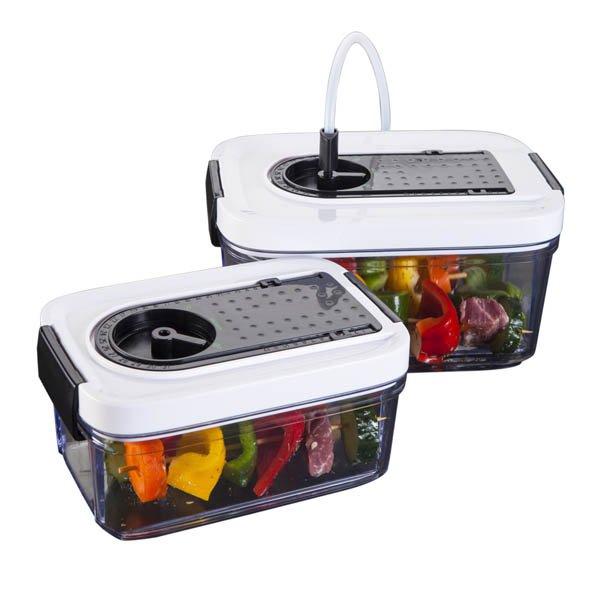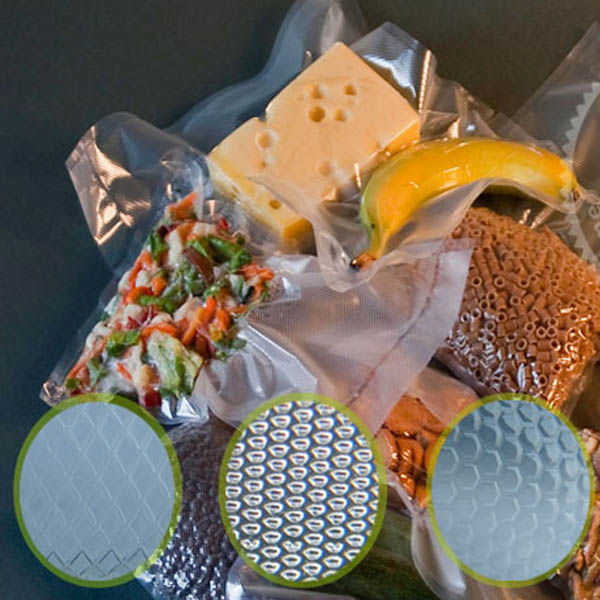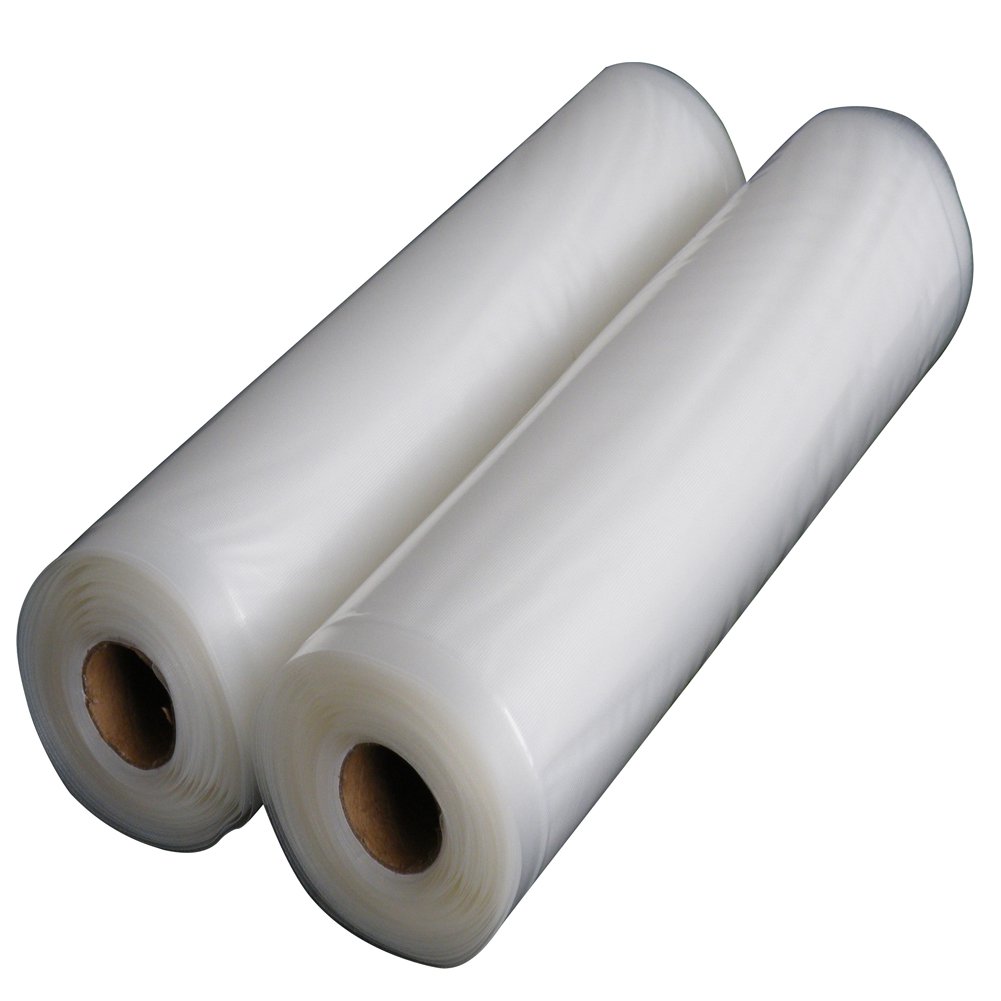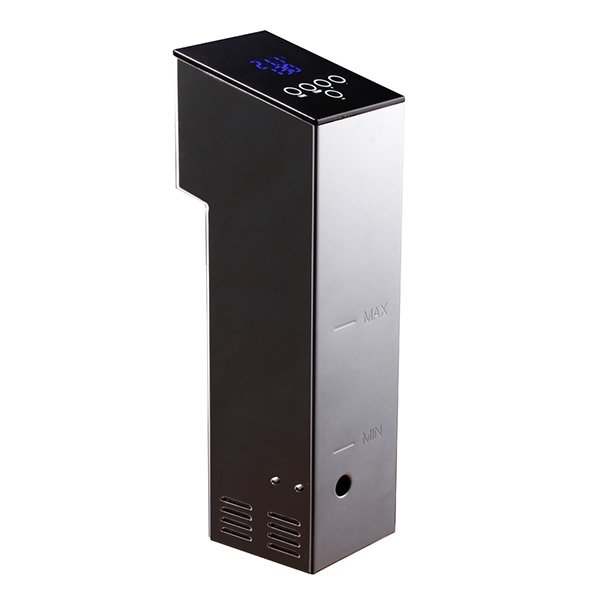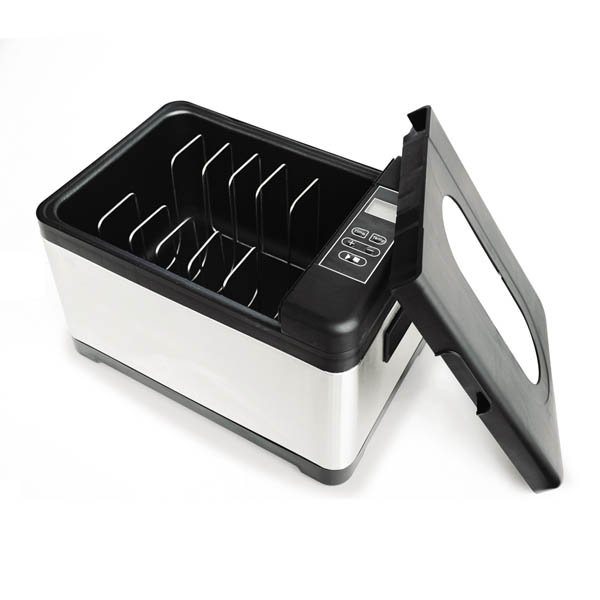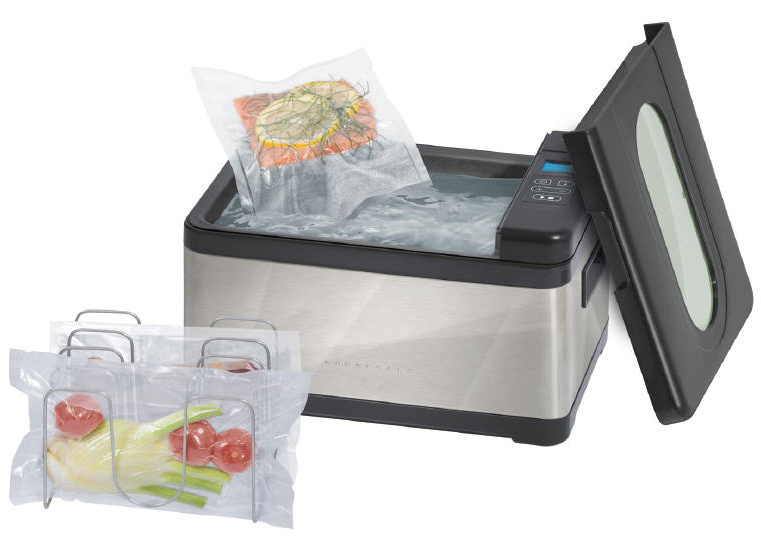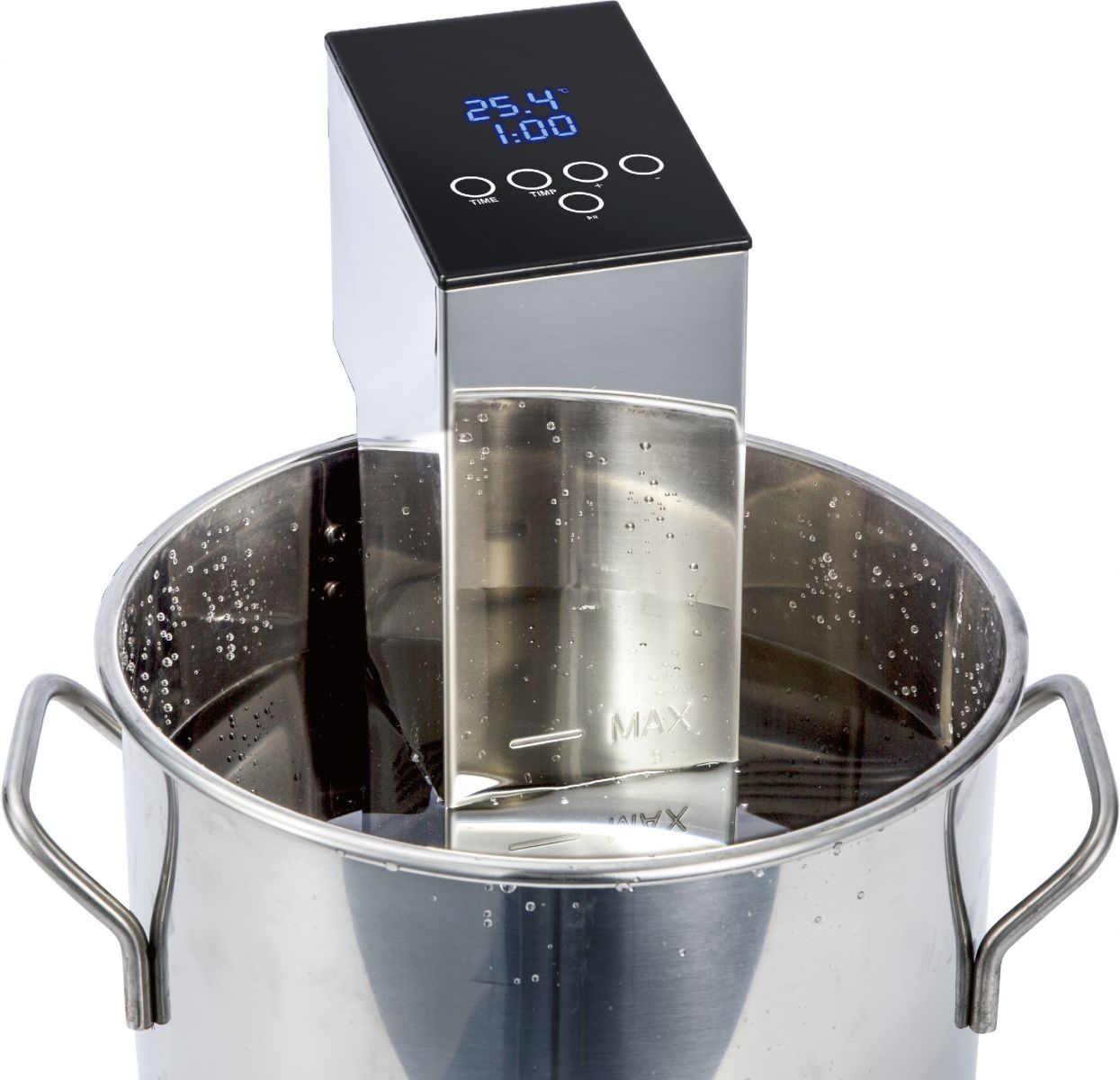Vacuum sealers, also called vacuum packaging devices, are versatile kitchen appliances designed for food items preservation. They operate by extracting air from specially crafted bags or containers, establishing an impermeable seal. The fundamental objective of vacuum sealer is to prolong the longevity of foodstuffs while acting as a safeguard against spoilage. This is achieved by eradicating the oxygen presence, which is a catalyst for the proliferation of bacteria, molds, and various other microorganisms.
How Vacuum Sealers Work?
Vacuum sealers function by means of a dual-stage procedure: air extraction and sealing.1. In the course of air extraction, the vacuum sealer withdraws air from the vacuum-sealable bag or container.
2. Following this step, it establishes an airtight seal utilizing a heat strip.
2. Following this step, it establishes an airtight seal utilizing a heat strip.
Benefits of Using Vacuum Sealers
Vacuum sealers present a range of benefits, which include:● Prolonged Shelf Life: They maintain the freshness of food over extended durations.
● Shielding Against Freezer Burn: By eliminating moisture loss and oxidation, they protect frozen items from freezer burn.
● Efficient Food Preservation and Storage: These appliances simplify the storage of bulk quantities of food.
● Enhanced Marinating Abilities: They expedite the infusion of flavors into food items.
● Diminished Food Waste: Vacuum sealers help reduce spoilage and minimize waste.
● Shielding Against Freezer Burn: By eliminating moisture loss and oxidation, they protect frozen items from freezer burn.
● Efficient Food Preservation and Storage: These appliances simplify the storage of bulk quantities of food.
● Enhanced Marinating Abilities: They expedite the infusion of flavors into food items.
● Diminished Food Waste: Vacuum sealers help reduce spoilage and minimize waste.
Which Type to Choose?
YS provides four types of vacuum sealer for you choice. The choice of vacuum sealer largely depends on your specific needs and usage.● For the typical home cook seeking to preserve leftovers, store bulk buys, and prevent food waste, a Household Vacuum Sealer stands as an optimal selection, striking a harmonious blend of practicality and cost-effectiveness.
● For those with restricted kitchen space or occasional sealing requirements, a Mini Vacuum Sealer presents a convenient and portable solution.
● For those dedicated home chefs or small-scale food producers, a Stainless Steel Vacuum Sealer delivers both durability and meticulous control.
● For a commercial kitchen manager or those requiring robust sealing capabilities for substantial food quantities, a Commercial Vacuum Sealer emerges as the top choice, ensuring utmost efficiency and unwavering reliability.
● For those with restricted kitchen space or occasional sealing requirements, a Mini Vacuum Sealer presents a convenient and portable solution.
● For those dedicated home chefs or small-scale food producers, a Stainless Steel Vacuum Sealer delivers both durability and meticulous control.
● For a commercial kitchen manager or those requiring robust sealing capabilities for substantial food quantities, a Commercial Vacuum Sealer emerges as the top choice, ensuring utmost efficiency and unwavering reliability.
For each type listed above, we provide various models at different prices and the choice ultimately depends on your sealing demands and budget.
Applications of vacuum sealer
The versatility of vacuum sealers extends to various scenarios in both household and commercial settings. Below, we outline some typical applications of these devices:● Food Preservation
The primary function of vacuum sealers is to prolong the durability of various food products by extracting air and securely sealing them within airtight packaging like bags or containers. This effectively inhibits oxidation, curbs bacterial proliferation, and prevents freezer burn, resulting in an extended freshness of food items. Typical applications include:
1. Storing fresh produce
2. Meats and fish preservation
3. Marinating foods quickly
4. Preparing and preserving cooked meals for future consumption.
● Bulk Food Storage
By vacuum sealing, you can purchase food items in larger quantities and divide them into smaller, hermetically sealed packages. This practice contributes to cost savings and food wastage reduction.
● Sous Vide Cooking
Sous vide enthusiasts often favor vacuum-sealed bags for their cooking method, which involves precisely controlled water baths. These specialized bags effectively retain flavors and facilitate even cooking by sealing the food items securely.
● Vacuum-Sealed Jars and Canisters
Certain vacuum sealers are equipped with supplementary attachments or accessories designed for vacuum-sealing Mason jars or specialized vacuum canisters. This feature proves useful for preserving dry goods, spices, and various non-liquid items.
● Conservation of Collectibles and Documents
Vacuum sealing provides a method to shield collectibles, vital documents, and photographs against moisture, dust, and potential damage.
The primary function of vacuum sealers is to prolong the durability of various food products by extracting air and securely sealing them within airtight packaging like bags or containers. This effectively inhibits oxidation, curbs bacterial proliferation, and prevents freezer burn, resulting in an extended freshness of food items. Typical applications include:
1. Storing fresh produce
2. Meats and fish preservation
3. Marinating foods quickly
4. Preparing and preserving cooked meals for future consumption.
● Bulk Food Storage
By vacuum sealing, you can purchase food items in larger quantities and divide them into smaller, hermetically sealed packages. This practice contributes to cost savings and food wastage reduction.
● Sous Vide Cooking
Sous vide enthusiasts often favor vacuum-sealed bags for their cooking method, which involves precisely controlled water baths. These specialized bags effectively retain flavors and facilitate even cooking by sealing the food items securely.
● Vacuum-Sealed Jars and Canisters
Certain vacuum sealers are equipped with supplementary attachments or accessories designed for vacuum-sealing Mason jars or specialized vacuum canisters. This feature proves useful for preserving dry goods, spices, and various non-liquid items.
● Conservation of Collectibles and Documents
Vacuum sealing provides a method to shield collectibles, vital documents, and photographs against moisture, dust, and potential damage.
Accessories and Supplementary Features
When it comes to vacuum sealers, a range of accessories is available, encompassing diverse bag types, varied sizes, sealing rolls, and attachments tailored for jar and bottle sealing. Certain models even incorporate cutting mechanisms and advanced settings, affording users meticulous control over the vacuum sealing process.Maintenance and Safety Precautions
● Regular Cleaning: Regularly clean the sealing area and any removable components to prevent residue buildup.
● Inspect Seals: Periodically examine the seals for any signs of irregularities or weakening. If you observe any issues with the seals, consider replacing the sealing gasket or other components as needed.
● Oil Maintenance (for certain models): Adhere to the manufacturer's guidelines regarding oil changes and maintenance for vacuum sealers equipped with oil pumps.
● Use Compatible Bags: Make sure that you are employing vacuum-seal bags or containers that match the specifications of your particular vacuum sealer model.
● Avoid Sealing Liquids: Exercise care when vacuum sealing liquids to safeguard the machine from potential damage. To prevent spillage, it's advisable to freeze liquids in a separate container before sealing.
● Inspect Seals: Periodically examine the seals for any signs of irregularities or weakening. If you observe any issues with the seals, consider replacing the sealing gasket or other components as needed.
● Oil Maintenance (for certain models): Adhere to the manufacturer's guidelines regarding oil changes and maintenance for vacuum sealers equipped with oil pumps.
● Use Compatible Bags: Make sure that you are employing vacuum-seal bags or containers that match the specifications of your particular vacuum sealer model.
● Avoid Sealing Liquids: Exercise care when vacuum sealing liquids to safeguard the machine from potential damage. To prevent spillage, it's advisable to freeze liquids in a separate container before sealing.
Commercial Vacuum Sealer Machine VS950 Silver
Commercial Vacuum SealerVertical Automatic Vacuum Sealer VS300 Silver
Stainless Steel Vacuum SealerFood Saver Vacuum Sealer Machine VS150 White
Stainless Steel Vacuum SealerHeat Sealing Food Packaging Machine VS200S Black
Stainless Steel Vacuum SealerKitchen Vacuum Sealer VS200S White
Stainless Steel Vacuum SealerDurable Food Vacuum Sealer VS100S White
Stainless Steel Vacuum SealerVacuum Food Sealer VS100S Black
Stainless Steel Vacuum SealerFood Vacuum Packaging Machine VS200 Black
Stainless Steel Vacuum SealerVacuum Sealer Bags, Rolls, and Canisters
As soon as you embark on your journey of vacuum sealing food, vacuum sealer bags become an indispensable requirement. These bags are the perfect complement to our vacuum sealer machines, ensuring the preservation of freshness and flavor. Crafted from durable, BPA-free materials, they offer excellent resistance against punctures and tearing, providing you with the assurance that your food remains securely protected.We offers a comprehensive selection of vacuum seal rolls, bags, and canisters, allowing you to tailor your choice to your specific food storage needs. To make an informed decision about which type of vacuum seal bags best suits your requirements, delve into our detailed information on the various options available. Your path to food preservation excellence begins here.
Common Types of Vacuum Sealer Rolls and Bags
There is a variety of vacuum sealer bags and rolls available to meet various food preservation and storage needs. Here are some common types:● Standard Vacuum Sealer Bags and Rolls: Among the most widely employed options, standard vacuum sealer bags and rolls are typically crafted from durable materials like polyethylene and nylon. They offer a range of sizes, ensuring versatility and suitability for sealing a diverse array of foods.
● Textured or Embossed Vacuum Sealer Bags and Rolls: Featuring a textured or embossed surface on one side, these bags enhance the efficiency of air removal during the vacuum sealing process. They are particularly well-suited for items with irregular shapes and surfaces.
● Zip-Top Vacuum Sealer Bags: In addition to the vacuum-sealing function, these bags incorporate a convenient zip-top closure. This design is ideal for items that require frequent access, such as snacks or portions of frozen food.
● Boilable Vacuum Sealer Bags: Designed to endure immersion in boiling water, boilable bags are tailored for sous vide cooking. They exhibit heat-resistant properties, ensuring safe and effective cooking at elevated temperatures.
● Textured or Embossed Vacuum Sealer Bags and Rolls: Featuring a textured or embossed surface on one side, these bags enhance the efficiency of air removal during the vacuum sealing process. They are particularly well-suited for items with irregular shapes and surfaces.
● Zip-Top Vacuum Sealer Bags: In addition to the vacuum-sealing function, these bags incorporate a convenient zip-top closure. This design is ideal for items that require frequent access, such as snacks or portions of frozen food.
● Boilable Vacuum Sealer Bags: Designed to endure immersion in boiling water, boilable bags are tailored for sous vide cooking. They exhibit heat-resistant properties, ensuring safe and effective cooking at elevated temperatures.
Versatile Applications of Vacuum Sealer Bags and Rolls
Vacuum sealer bags and rolls are versatile and find applications in various scenarios. Here are different application scenarios for vacuum sealer bags and rolls:● Food Preservation: Vacuum sealing preserves a variety of foods, preventing oxidation and spoilage.
● Sous Vide Cooking: Vacuum sealer bags ensure airtight seals for precise temperature control.
● Portion Control: Pre-cut bags and custom rolls aid in sealing individual food servings.
● Long-Term Storage: Ideal for preserving bulk foods by blocking moisture and air.
● Travel and Outdoors: Compact, airtight packing for travel, camping, and hiking.
● Organization and Protection: Safeguarding documents, collectibles, and valuables from moisture and damage.
● Sous Vide Cooking: Vacuum sealer bags ensure airtight seals for precise temperature control.
● Portion Control: Pre-cut bags and custom rolls aid in sealing individual food servings.
● Long-Term Storage: Ideal for preserving bulk foods by blocking moisture and air.
● Travel and Outdoors: Compact, airtight packing for travel, camping, and hiking.
● Organization and Protection: Safeguarding documents, collectibles, and valuables from moisture and damage.
Portable Vacuum Sealer Canister CAN075150 Yellow
Vacuum Sealer Roll & BagConvenient Vacuum Sealer Canister CAN075150 Black
Vacuum Sealer Roll & BagFreezable Storage Bag of Vacuum Sealer VB2230 & VB2840
Vacuum Sealer Roll & BagSimple Storage Roll of Vacuum Sealer BR2205
Vacuum Sealer Roll & BagEasy Storage Roll of Vacuum Sealer BR2805
Vacuum Sealer Roll & BagAbout Sous Vide Cooker
A sous vide cooker, also called a sous vide machine or immersion circulator, is a kitchen appliance that is increasingly popular among professional chefs and home cooks due to its exceptional precision in culinary preparation. The term "sous vide," derived from the French for "under vacuum," describes a cooking method in which food is vacuum-sealed within a plastic bag and gently cooked at a meticulously controlled and consisitent low temperature while immersed in a water bath.How Sous Vide Cooking Works?
1. To initiate sous vide cooking, the first step involves placing the food within a vacuum-sealed bag. This can be accomplished either using a vacuum sealer or by manually expelling air from a resealable plastic bag, known as the water displacement method.
2. Subsequently, the bag containing the food is submerged in a precisely temperature-controlled water bath. A sous vide cooker is employed to heat the water and ensure its circulation, maintaining a consistent temperature throughout.
3. The critical aspect of sous vide cooking lies in the meticulous control of water temperature, which is upheld within an exceptionally narrow range. Typically, this temperature hovers between 120°F (49°C) to 165°F (74°C), depending on the preferred level of doneness and the specific type of food being prepared.
4. Sous vide cooking times can exhibit considerable variation, ranging from as little as 30 minutes to several hours. This is especially applicable to tougher cuts of meat that derive significant benefit from prolonged cooking durations, rendering them tender and succulent.
2. Subsequently, the bag containing the food is submerged in a precisely temperature-controlled water bath. A sous vide cooker is employed to heat the water and ensure its circulation, maintaining a consistent temperature throughout.
3. The critical aspect of sous vide cooking lies in the meticulous control of water temperature, which is upheld within an exceptionally narrow range. Typically, this temperature hovers between 120°F (49°C) to 165°F (74°C), depending on the preferred level of doneness and the specific type of food being prepared.
4. Sous vide cooking times can exhibit considerable variation, ranging from as little as 30 minutes to several hours. This is especially applicable to tougher cuts of meat that derive significant benefit from prolonged cooking durations, rendering them tender and succulent.
Why Choose Sous Vide Cooking?
Sous vide cooking has gained immense popularity in recent years, and for good reason. This culinary technique offers a range of benefits that make it an attractive choice for both home cooks and professional chefs. Here's why you should consider choosing sous vide cooking:
● Precision Cooking
Sous vide cooking offers meticulous control over the desired doneness of food. With the water bath's temperature consistently and precisely regulated, the risk of overcooking is minimized. It's especially adept at preparing proteins like steak, poultry, fish, and eggs to the exact level of doneness you desire, whether rare, medium-rare, or well-done.
●Tenderizing Benefits
Sous vide cooking excels at tenderizing tougher cuts of meat during extended cooking periods while preserving their moisture and flavor. This is particularly advantageous for braising cuts such as short ribs and brisket.
● Enhanced Flavor and Juiciness
As the food is hermetically sealed within a bag, the flavors and juices are retained, resulting in exceptionally flavorful and juicy dishes.
● Food Safety
Sous vide cooking is widely regarded as safe due to its precise temperature control, which ensures that food reaches a pasteurized state, effectively eliminating harmful bacteria while maintaining food quality.
●Tenderizing Benefits
Sous vide cooking excels at tenderizing tougher cuts of meat during extended cooking periods while preserving their moisture and flavor. This is particularly advantageous for braising cuts such as short ribs and brisket.
● Enhanced Flavor and Juiciness
As the food is hermetically sealed within a bag, the flavors and juices are retained, resulting in exceptionally flavorful and juicy dishes.
● Food Safety
Sous vide cooking is widely regarded as safe due to its precise temperature control, which ensures that food reaches a pasteurized state, effectively eliminating harmful bacteria while maintaining food quality.
Versatility of Sous Vide Cooking
The versatility of sous vide cooking lies in its ability to adapt to a wide range of ingredients and dishes, making it a valuable technique in the culinary world. Here's an exploration of the versatility of sous vide cooking:● Proteins: Sous vide is often associated with perfectly cooked meats. It excels at preparing various cuts of beef, pork, lamb, poultry, and fish to precise levels of doneness, delivering precise doneness levels, whether it's a rare steak or thoroughly cooked chicken.
● Seafood: Delicate seafood such as salmon, lobster, and scallops, thrive under the sous vide method, preserving their tenderness, moisture, and exquisite flavors.
● Eggs: Sous vide is renowned for its ability to produce eggs with precise textures, from custardy yolks to silky egg whites. It's the secret to achieving flawlessly poached eggs or crafting custard delights for desserts.
● Vegetables: Sous vide lends itself to the artful preparation of vegetables, maintaining their vibrant hues and essential nutrients. It provides an avenue for infusing vegetables with aromatic herbs and seasonings, elevating their taste while preserving their crunch or tenderness.
● Desserts: Desserts like custards, cheesecakes, and fruit compotes can be prepared with precision using sous vide. The consistent, gentle heating ensures the avoidance of curdling or overcooking.
● Marinating and Brining: Foods can be marinated or brined within the vacuum-sealed bags, allowing flavors to penetrate deeply. This enhances the taste of proteins and vegetables.
● Tough Cuts of Meat: Sous vide emerges as the savior of challenging meat cuts, turning them into succulent masterpieces. Extended cooking durations at lower temperatures tenderize the meat, rendering it delectably moist while preserving its natural juices.
● Seafood: Delicate seafood such as salmon, lobster, and scallops, thrive under the sous vide method, preserving their tenderness, moisture, and exquisite flavors.
● Eggs: Sous vide is renowned for its ability to produce eggs with precise textures, from custardy yolks to silky egg whites. It's the secret to achieving flawlessly poached eggs or crafting custard delights for desserts.
● Vegetables: Sous vide lends itself to the artful preparation of vegetables, maintaining their vibrant hues and essential nutrients. It provides an avenue for infusing vegetables with aromatic herbs and seasonings, elevating their taste while preserving their crunch or tenderness.
● Desserts: Desserts like custards, cheesecakes, and fruit compotes can be prepared with precision using sous vide. The consistent, gentle heating ensures the avoidance of curdling or overcooking.
● Marinating and Brining: Foods can be marinated or brined within the vacuum-sealed bags, allowing flavors to penetrate deeply. This enhances the taste of proteins and vegetables.
● Tough Cuts of Meat: Sous vide emerges as the savior of challenging meat cuts, turning them into succulent masterpieces. Extended cooking durations at lower temperatures tenderize the meat, rendering it delectably moist while preserving its natural juices.

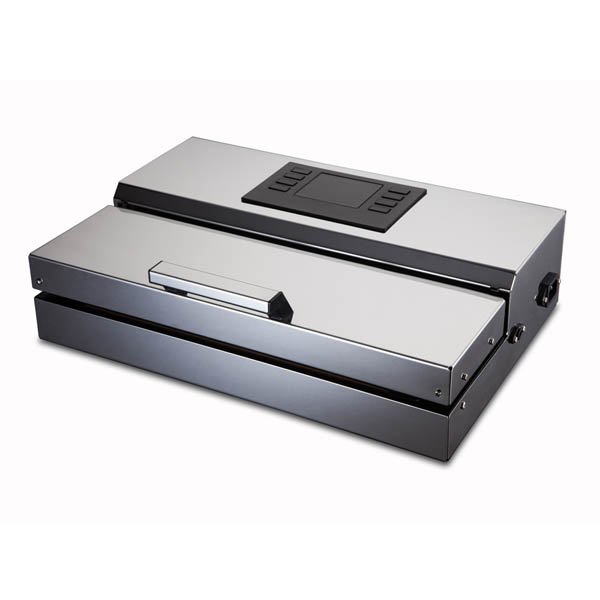
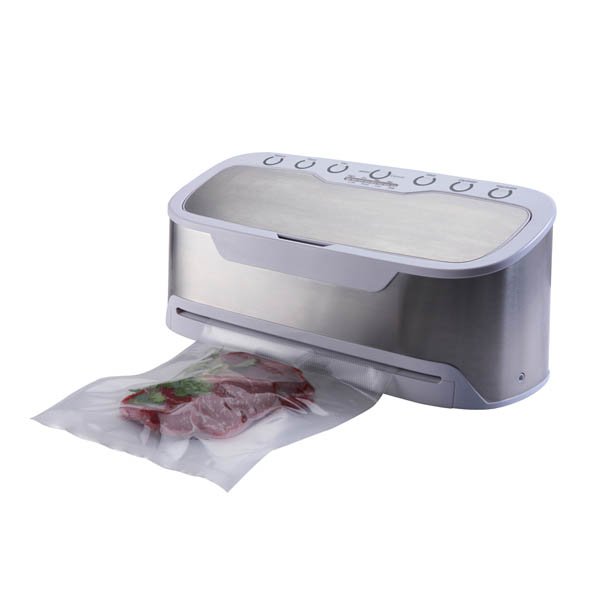
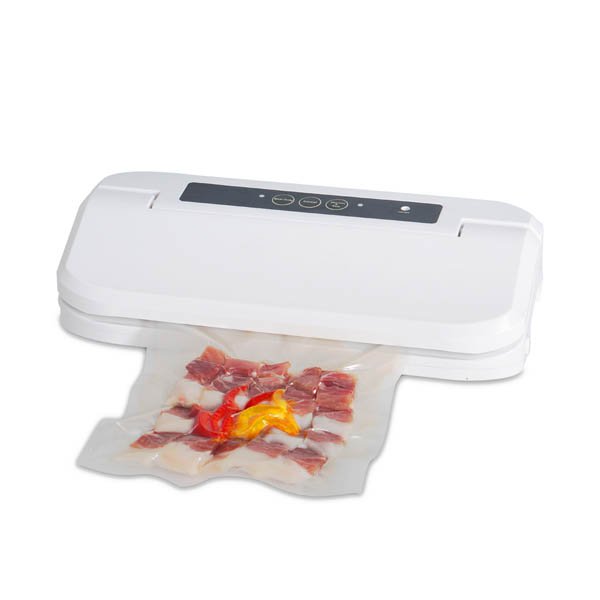
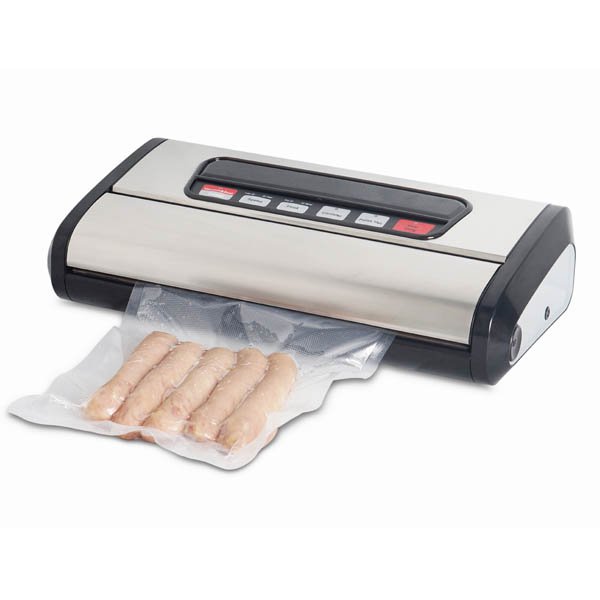
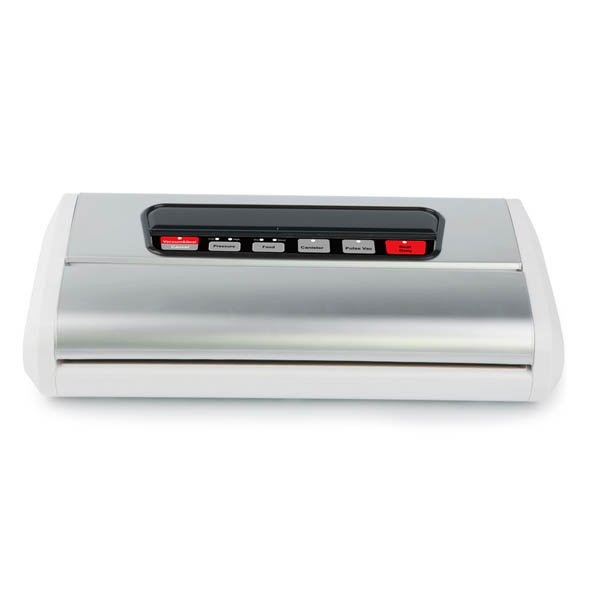
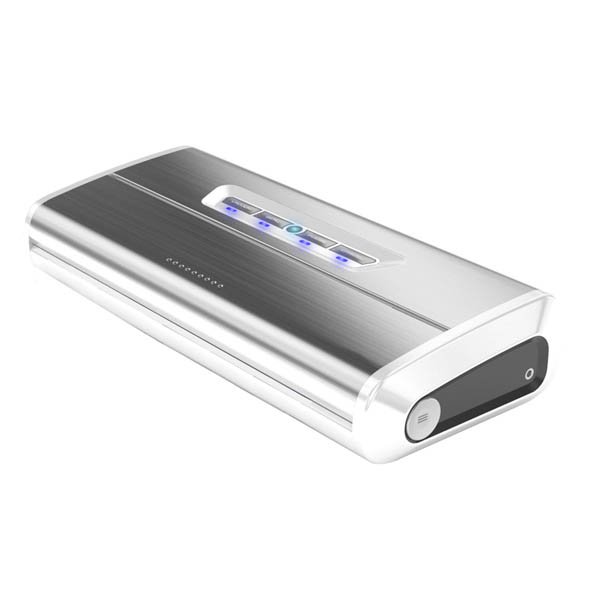
.jpg?q=90&fm=webp&s=90b280b3433750e70c2d8b7c33615fa7)
